
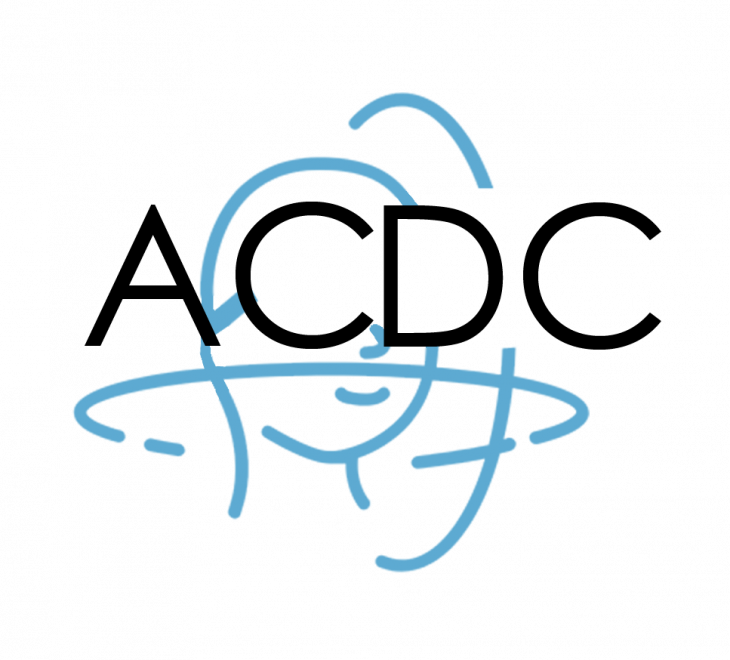
Augmented Construction for Digital Computation
AC/DC is a project that allows users to build an interactive installation, quickly, using the Hololens. The installation is adaptable to any site due to state of the art technologies; 3D scanning and algorithmic design. With the digital platform users are able to simulate construction and see there customized design on site before beginning the next phase of augmented construction.
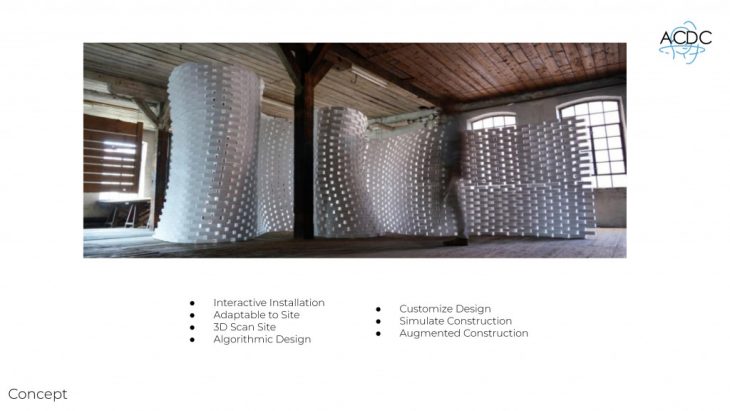
The user locates a site and with the hololens they create a 3D scan of the site. The site mesh is then entered as an input to create a parametric model, that adjusted itself throughout the context. The user can then simulate a catalog of alternative forms until they are satisfied with the result. Next the user can pick from a variety of modular bricks to construct the wall. Once the design is finalized this information will be fed through HoloFab to the Hololens to simulate the installation in real time and evaluate the design. In just one afternoon the installation can be designed and constructed.
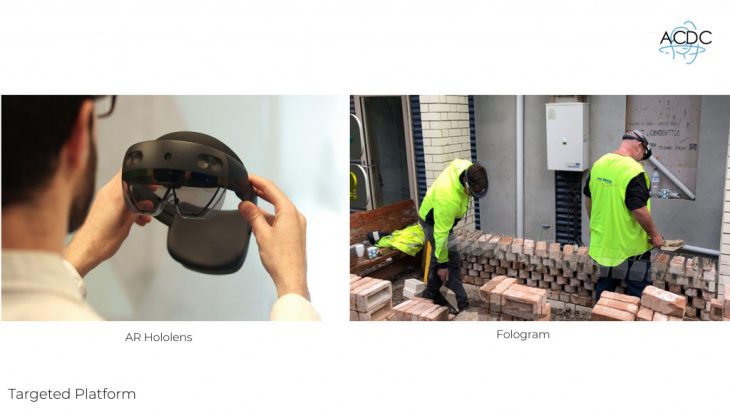
We needed a Headset that allows the implementation of gestures and different kind of deeper and natural interactions for the user. We ended up using the Hololens, a very capable AR device that allowed us to visualize and construct the installation.
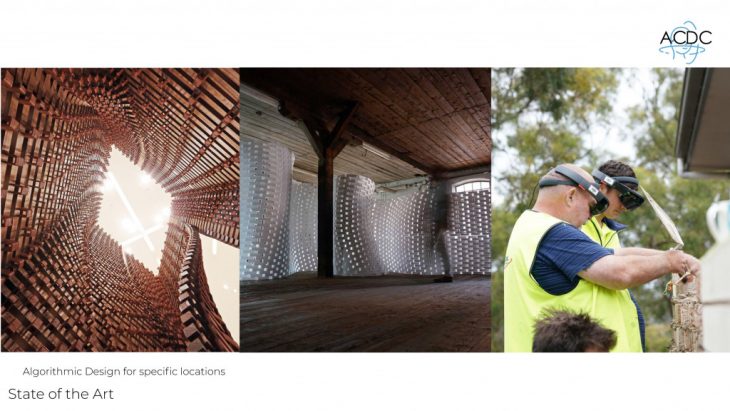
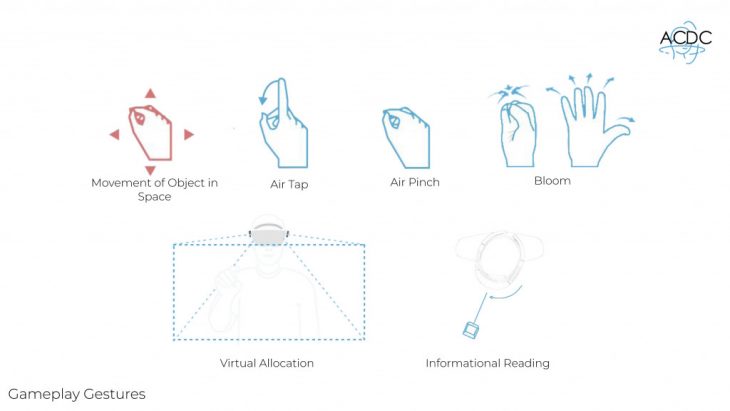
In order to be a user of the app you need to interact with both the real and augmented world. While interacting with the augmented reality you will need to know a few hand gestures. To begin bloom will open the start menu. Air tap allows the user to select the buttons create for the app. Air pinch acts as the next button for the construction phase, after setting down the first brick “Air tap” will signal to move to the next brick for construction.
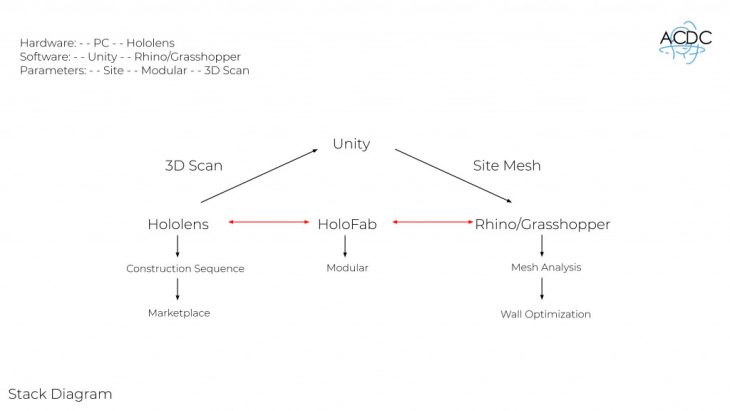

To begin a user will need to acquire a Hololens and intall the AC/DC App. Next locate the site they intend to construct the installation. With the Hololens you can create a 3D scan of the Site. The site is then input as a mesh into grasshopper. With grasshopper the site is evaluated for collision with context and a wall is then generated around the context. The user can now view a catalog of generated wall installations and choose from a variety of modular bricks. Once a wall is selected and a modular has been decided the installation is then simulated on site. If the installation is not as desired the user has the ability to take a set backwards otherwise the construction phase will begin. After you place the first brick “Air Tap” and the app will show the user the next place to stack a brick. Continue this until the wall is complete.

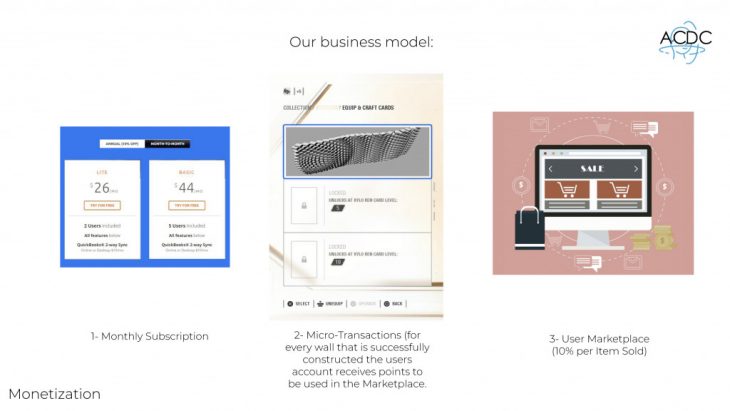
The project aims to be monetized with subscription and micro-transactions plans. Basically, the user pays a monthly fee to use the platform and be able to see his own modules and structure on the scene. However, there will be also an option to buy a modular from other users and be able to promote the creators of content and also see their content in real life for further fabrication and assembly in the real world.
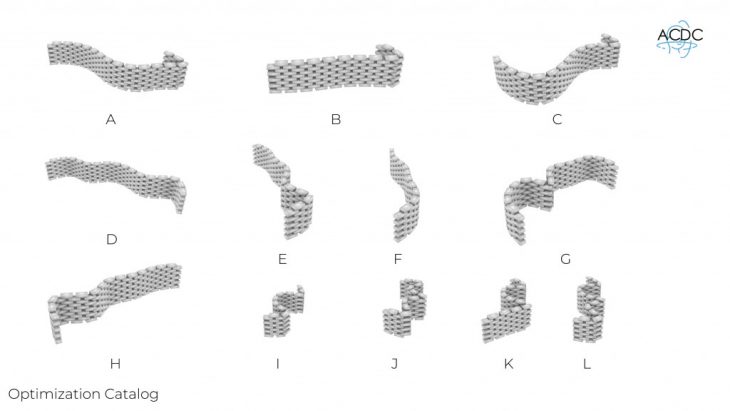
Developed in:
New Interfaces VR/AR, IAAC 2019
Project By:
Anton Koshelev, Justin Sheinberg, Kammil Carranza, Tarek Kassouf, Vinay Khare
Faculty:
Starsk Lara
Student Assistant:
Armin Akbari